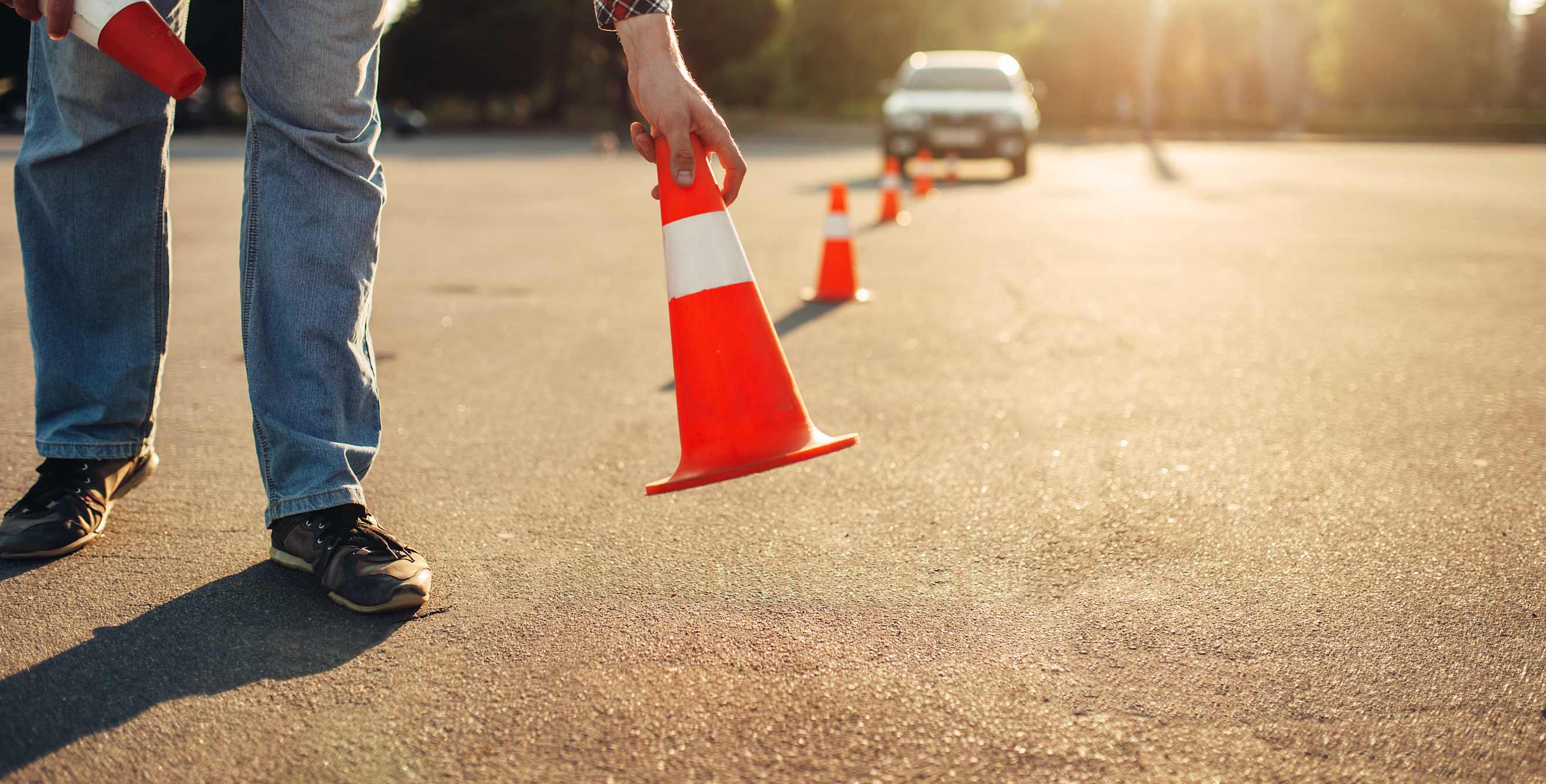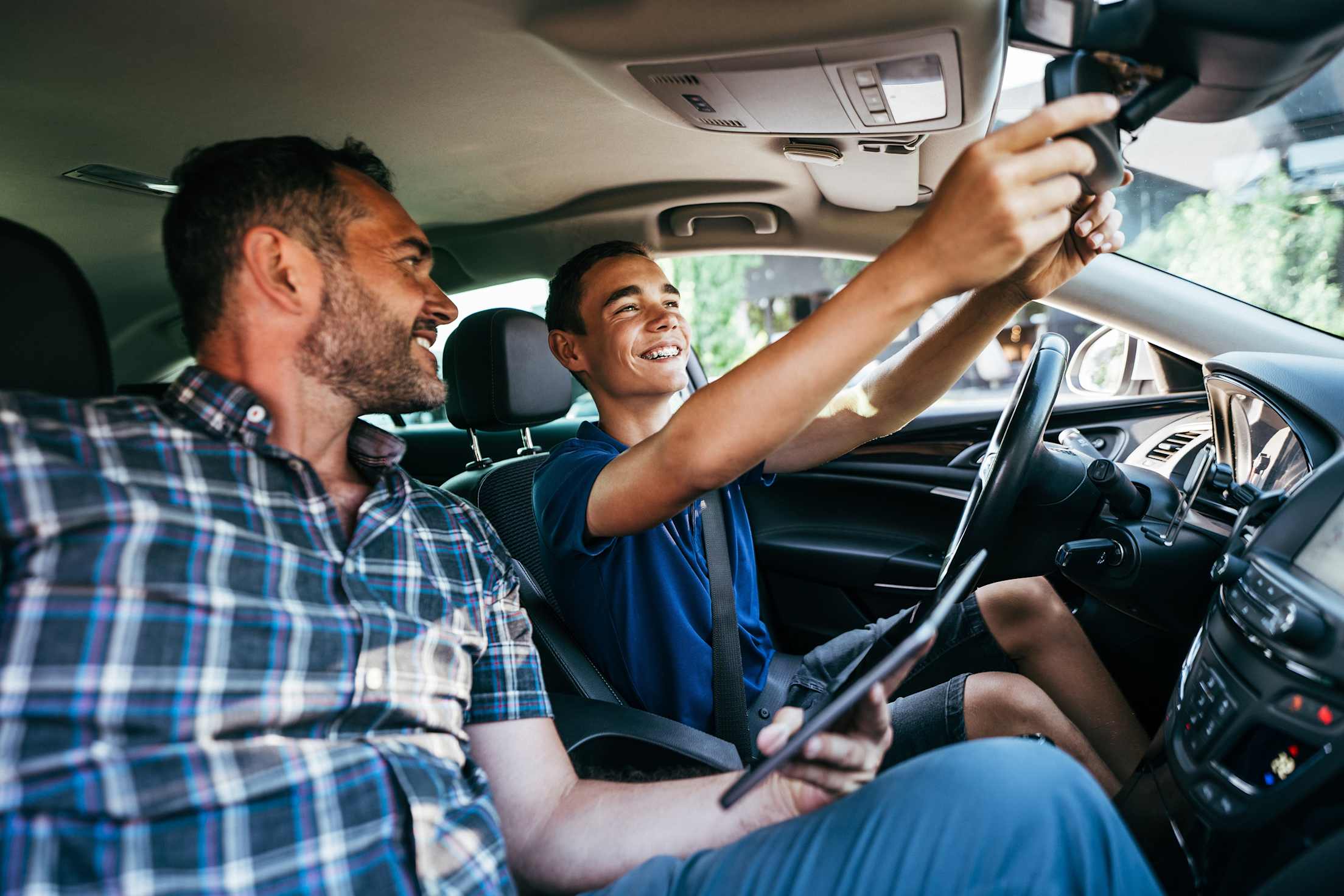
The Evolution of Drivers Education: From DIY to Digital
While the way we train new drivers has changed significantly, the essentials remain the same.

Back in 1931, an industrial engineer named Amos Neyhart was visiting his mother in Milton, Pennsylvania for Thanksgiving when an intoxicated driver hit his car parked out front. As he later told the story, that was when he realized that U.S. drivers needed better training.
Returning to Penn State, he began teaching high school students in the area how to drive. He used his own car for the hands-on training—a 1929 Graham-Paige sedan that he had equipped with a dual-control system he designed, which allowed him to take over the driving in case the student erred. In 1936, he began working on driver education programs with AAA.
Over the following years, he developed a system that combined classroom instruction with hands-on practice that would be familiar to almost anyone who’s learned to drive since then. But, as you might expect, given all the changes both to vehicles and the practice of driving since then, the substance of that training has evolved significantly.
Early Days
In the first decades of the 20th century, before Neyhart, driver training was mostly DIY. You would recruit a family member, friend, or local car dealer to show you how to control this new contraption.
That informal training focused largely on the practicalities of just making the thing go: On a Model T, that meant knowing things like how to safely crank the engine. (One early manual cautioned, “Don’t crank downward against the compression—for then an early explosion may drive the handle vigorously backward.”)
But, as Neyhart realized on that Thanksgiving in 1931, drivers needed to know more than just how to make their cars start, turn, and stop. They also needed to know how to share the road safely with other drivers and vehicles (parked or otherwise).
Neyhart’s subsequent evolution of a driver education curriculum culminated in 1935 with the publication of Sportsmanlike Driving. It soon became one of the most popular handbooks for driver training in the country. Among the topics it covered: the psychology of driving, the importance of seeing the road around you, and the impacts of alcohol and weather on driving performance.
After World War II, the demand for driver training surged, thanks to the expansion of interstates, the growth of suburbs, and a booming economy that put millions of new drivers on all those new roads.
AAA played a key role in training them. The club continued to publish and update Neyhart’s book (later retitled Responsible Driving) for decades. It founded the AAA Foundation for Traffic Safety, dedicated to research and education, in 1947. Then, in the 1950s, it began offering driver education programs of its own.

Now
The template that Neyhart established—the combination of classroom education and hands-on training—is still the basis for driver education we follow today. But the tools used for both of those components have evolved dramatically.
Classroom simulators—desktop setups with steering wheels and pedals for braking and acceleration paired with screens with road scenes—were first introduced in the 1950s. As William Van Tassel, manager of driver training programs for AAA nationally, puts it, those early simulators were “pretty basic.” While they could show students things they might encounter on the road, they weren’t interactive: The actions of students had no impact on the scene on the screen.
Today, Van Tassel says, we have “far better simulators that respond instantly to your inputs as a driver.” They offer a more realistic, engaging training experience, allowing students to practice driving scenarios that would be impossible to replicate safely in a car.
Virtual reality (VR) is emerging as another tool in driver education, particularly because it can create immersive and engaging learning environments. AAA has conducted pilot programs using VR in classrooms, and Van Tassel says students loved it, finding it “much more engaging than the average classroom would be.”
Online programs have become a key adjunct to classroom instruction. These can range from self-paced modules to live virtual classrooms with instructors. While formal studies on their effectiveness are ongoing, early research indicates that online options can be just about as successful as in-person instruction. The ability to review material at the student’s preferred pace is key. “If you’re in the classroom, you’re moving at whatever pace the classroom is,” Van Tassel says. “And once it’s covered, you’re not going back.”
Advanced driver assistance systems (ADAS) are also changing driver training. As ADAS features like lane-keeping assistance and blind-spot warnings become standard, instructors must integrate them into behind-the-wheel training. At the same time, students must learn how to drive without relying on them, because the ADAS in a training vehicle may not be available in the cars that they will drive later. “You still have to use your mirrors,” Van Tassel says.
AAA Members get discounted rates on our How to Drive Online course.